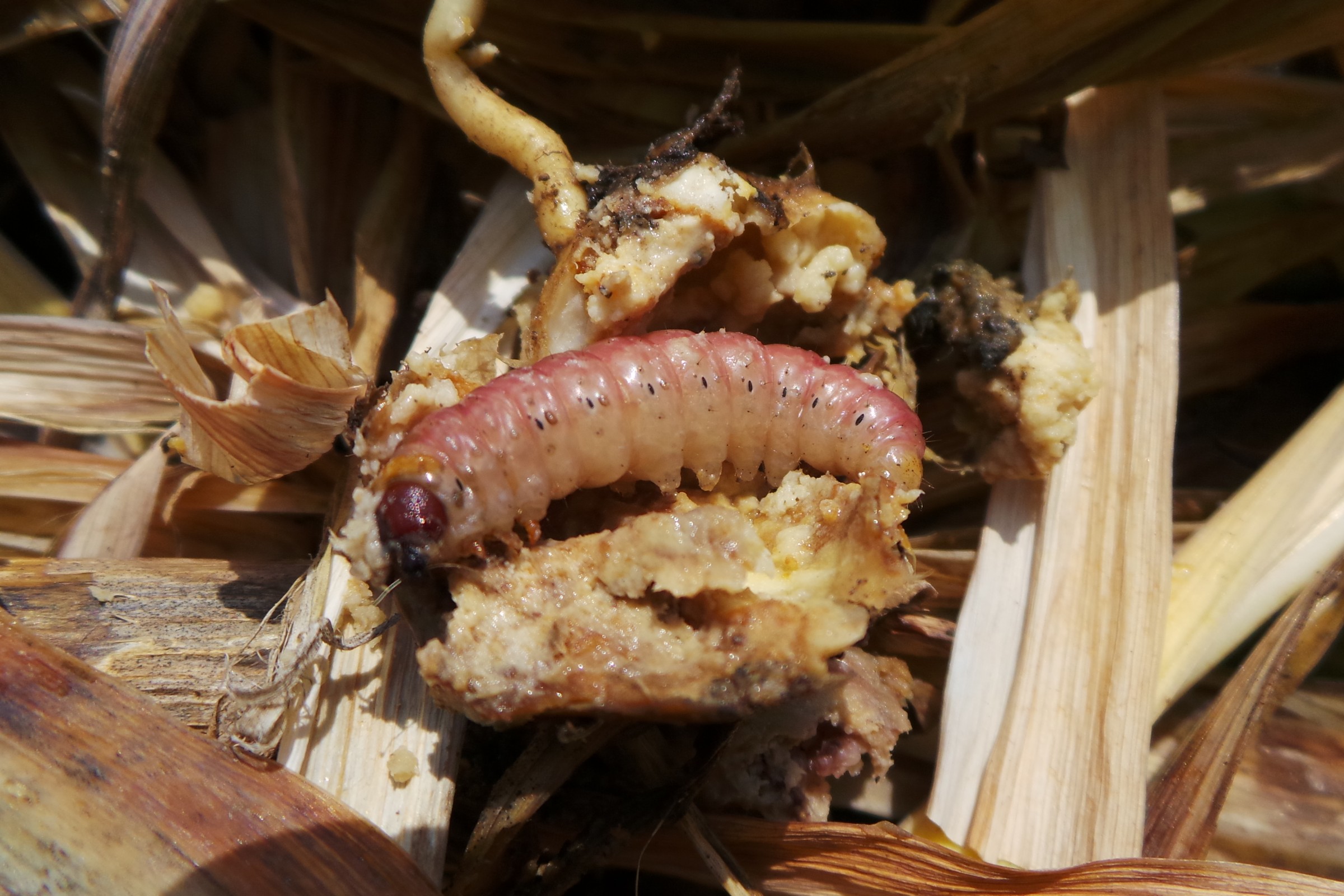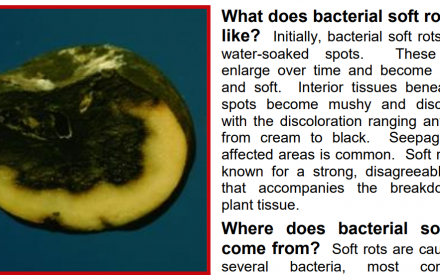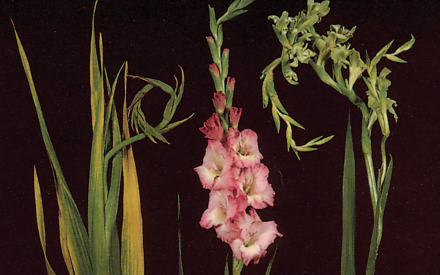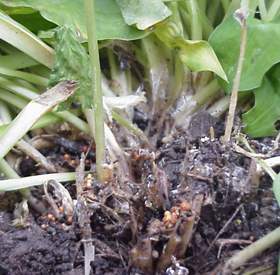
PJ Liesch, UW Insect Diagnostic Lab
Phil Pellitteri, formerly of the UW Insect Diagnostic Lab
XHT1041
Iris borer is the most serious pest of iris in Wisconsin. Iris plants attacked by iris borer will discolor, wilt, and die during late June and July. On close examination of affected plants, a pinkish-white caterpillar can be found feeding on the inside of rhizomes. Affected rhizomes also often are rotted and have a foul smell. The rotting is caused by soft rot bacteria that colonize the iris borer feeding areas. The unpleasant odor is caused by other bacteria that subsequently colonize the decayed tissue. Bearded iris is the type of iris most severely affected by iris borer. Siberian and dwarf iris typically have few problems with this insect.
Iris borers overwinter as eggs on both iris and other types of plant debris. Eggs hatch in early May and larvae bore into leaves, often leaving a water-soaked spot. Larvae tunnel down through the leaves and eventually reach the rhizomes below ground. Larvae move into the soil and pupate. Adult cutworm moths emerge and lay eggs in late August and September.
Control: Remove old plant debris near iris plants to destroy overwintering sites for iris borer eggs. While important for controlling iris borer, this technique will not always eliminate iris borer problems. In the spring, watch for small (approximately ¼ inch long) larvae as they begin to tunnel into iris leaves. These small larvae can be crushed by hand. If you decide to use an insecticide for control, select a product that contains azadirachtin, pyrethrins, permethrin, or spinosad. Insecticides must be applied before iris borer larvae tunnel deep into the plant. Therefore, first sprays should be applied when new iris shoots are four to six inches long, and a second application should be applied 10 to 14 days later. Be sure to read and follow all label instructions of the insecticide that you select to insure that you use the product in the safest and most effective manner possible. Products containing the parasitic nematodes Heterorhabditis or Steinernema also have been successful in controlling iris borer larvae when used as soil drenches in June and early July.
Download Article






 Bacterial Soft Rot
Bacterial Soft Rot Forcing Bulbs
Forcing Bulbs Gladiolus Disorder: Virus Complex and Aster Yellows
Gladiolus Disorder: Virus Complex and Aster Yellows Southern Blight
Southern Blight


